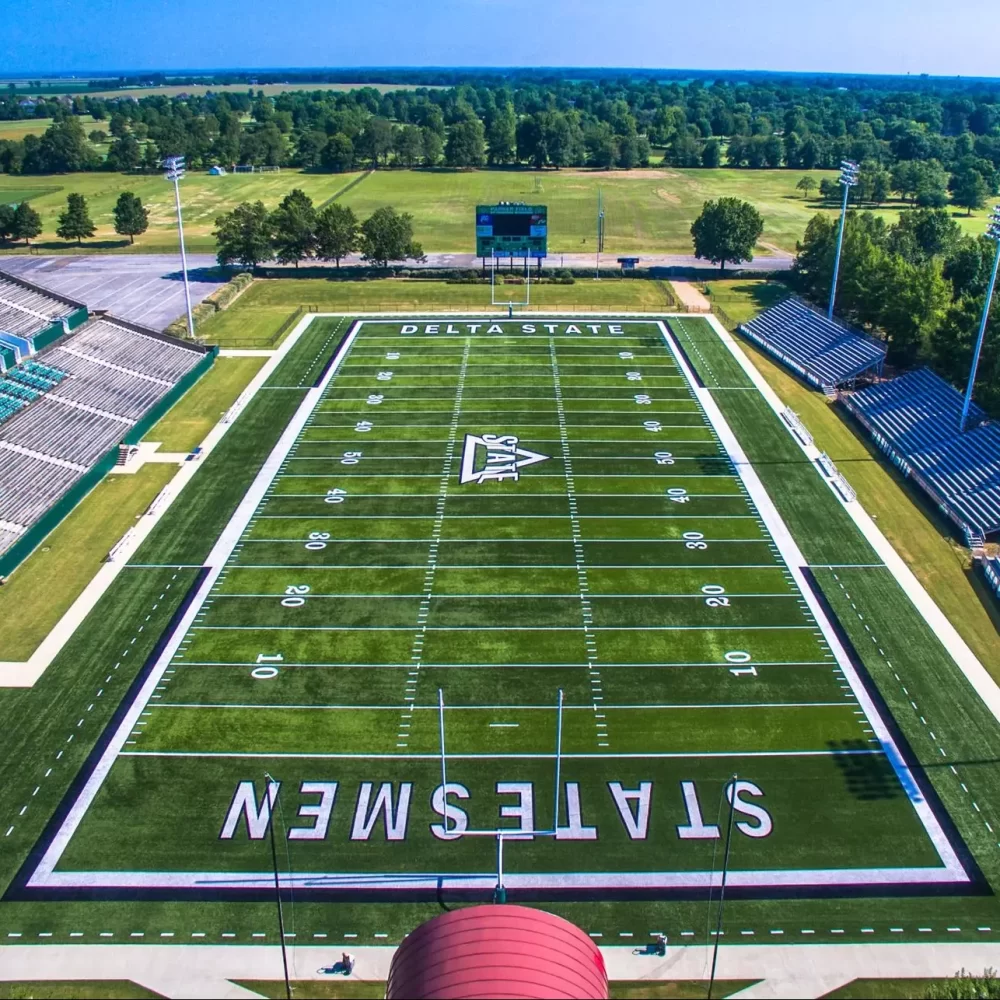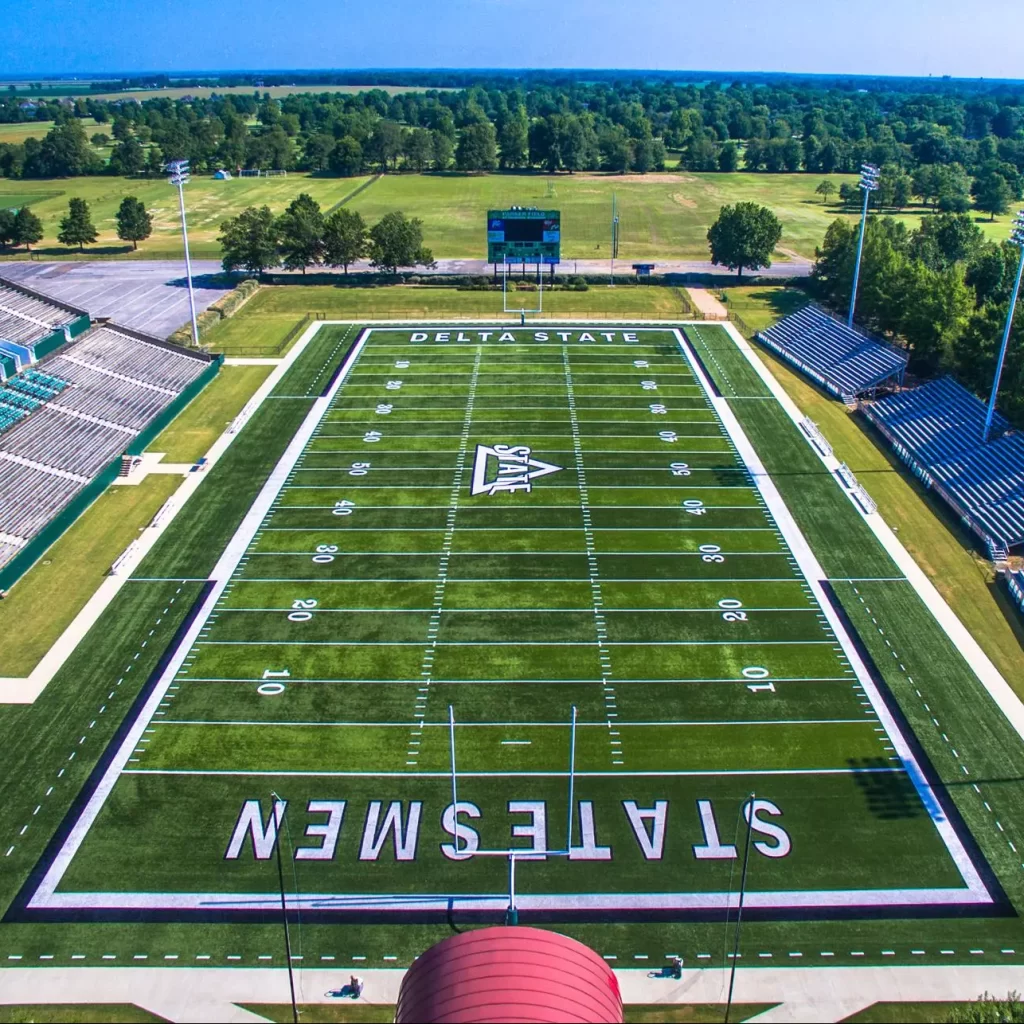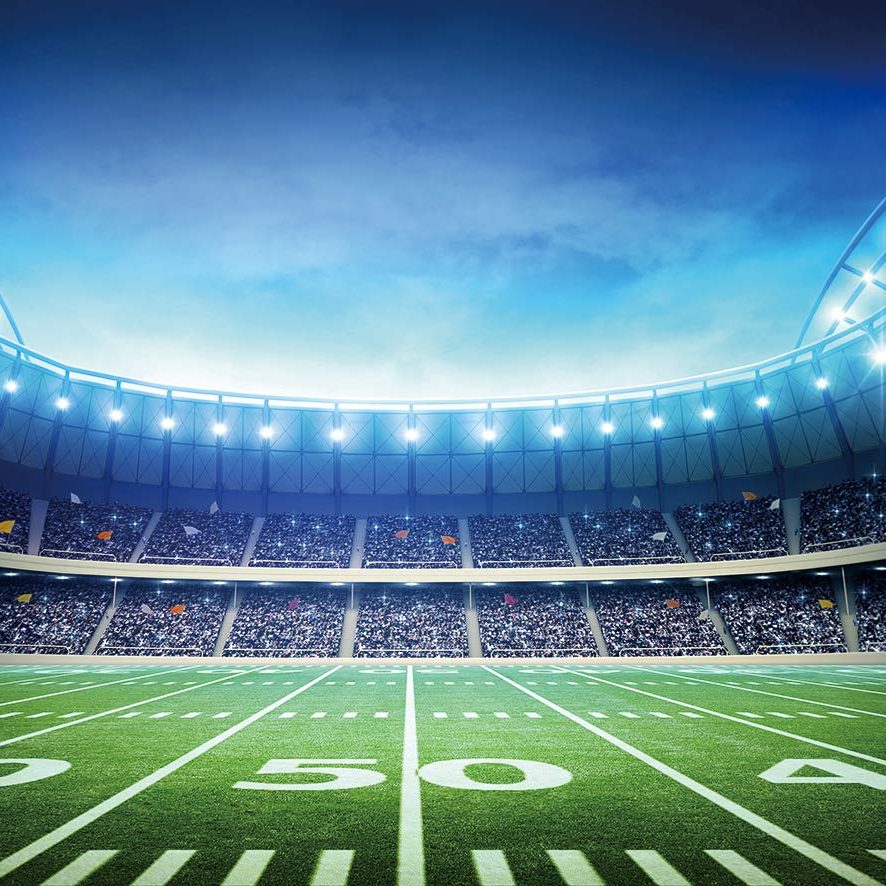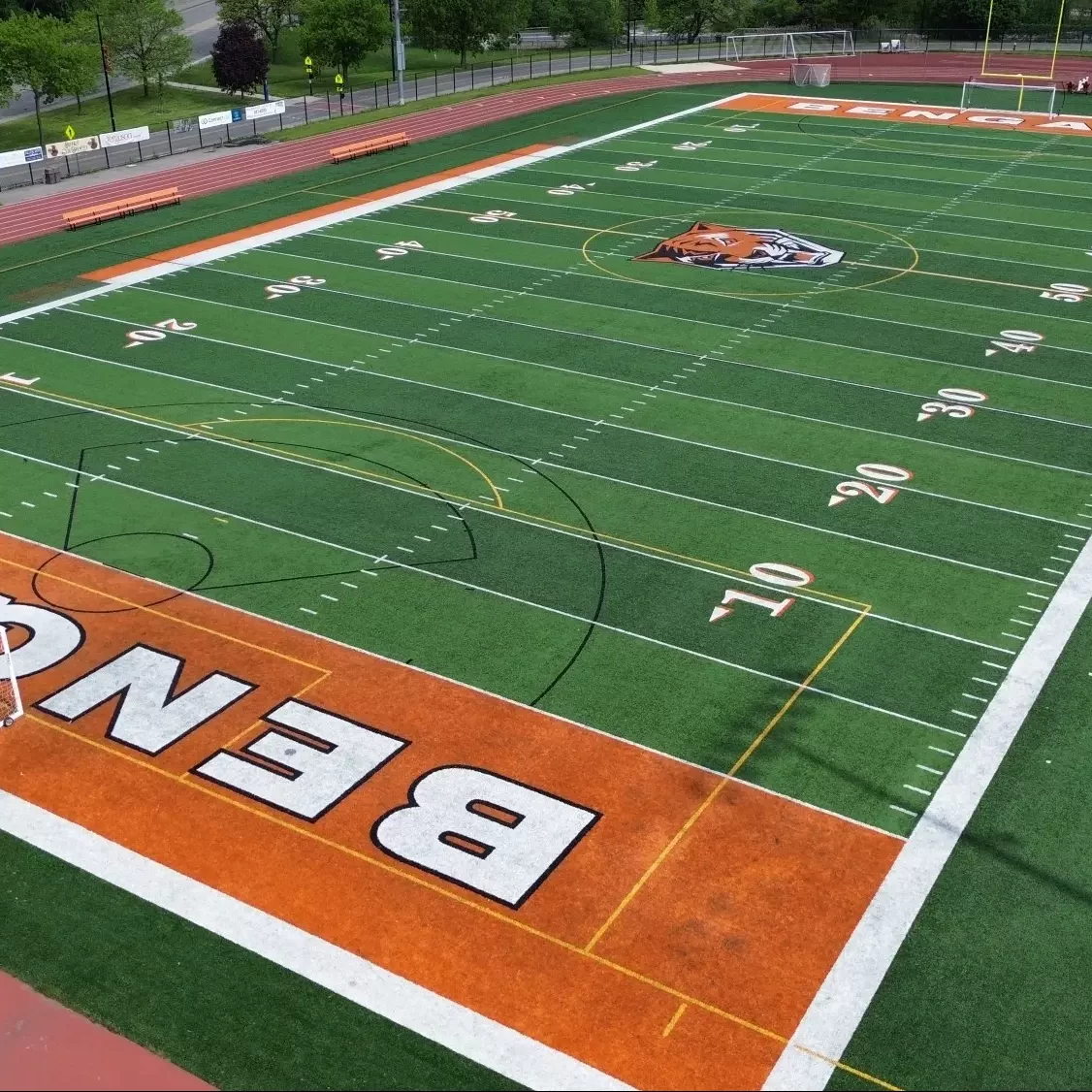When contemplating the grandeur of athletic arenas, the football field stands out as a symbol of both tradition and spectacle. For enthusiasts and casual observers alike, questions often arise about the precise measurements that define this iconic playing space. Specifically, the query, “how big is a football field in square feet?” serves as a gateway to understanding not only the physical dimensions but also the functional aspects that underpin the game. This comprehensive exploration delves into the standardized measurements, variations across different levels of play, historical context, and practical applications of knowing the exact size of a football field.
Standard Dimensions of a Football Field
Regulation Sizes in Professional Leagues
In professional American football, such as the National Football League (NFL), the field is meticulously measured to ensure uniformity across all venues. A standard NFL field measures 120 yards in length, which includes two 10-yard end zones, and 53.3 yards in width. To convert these measurements into square feet:
- Length: 120 yards × 3 feet/yard = 360 feet
- Width: 53.3 yards × 3 feet/yard = 160 feet
Thus, the total area is:
360 feet × 160 feet = 57,600 square feet
This precise measurement ensures that every game is played on a field that meets the exacting standards of the league, providing consistency for players, coaches, and fans alike.
Collegiate and High School Variations
At the collegiate and high school levels, the field dimensions generally mirror those of the NFL, maintaining the 120-yard length and 53.3-yard width. However, some variations can occur, especially in non-standard leagues or indoor football settings. Typically, these slight deviations do not significantly impact the overall area, keeping the field size close to the standard 57,600 square feet. Such consistency is vital for player training and competitive fairness across different levels of play.
Historical Evolution of the Football Field Size
Origins and Early Measurements
The dimensions of the football field have evolved considerably since the sport’s inception in the late 19th century. Originally, fields varied widely in size, with no standardized measurements. Early games were often played on open fields, golf courses, or other large expanses, leading to significant discrepancies in field lengths and widths. It wasn’t until regulatory bodies began to formalize the rules that standardized dimensions began to take shape.
Standardization in the 20th Century
The push towards standardization gained momentum in the early to mid-20th century. As football became more organized and professionalized, consistent field measurements became essential for fair competition and spectator experience. By the time the NFL was established, the 120-yard by 53.3-yard field had become the norm, a standard that has endured to this day. This standardization facilitated the growth of the sport, allowing for unified rules and consistent play conditions across all professional arenas.
Comparing Football Field Sizes to Other Sports
American Football vs. Soccer
While both American football and soccer fields are large, their dimensions differ significantly. A standard American football field measures 57,600 square feet, whereas a soccer field can range from 57,600 to over 100,000 square feet, depending on the level of play and specific league requirements. This difference reflects the distinct nature of each sport, with soccer fields generally requiring more space to accommodate continuous play and larger team sizes.
Football vs. Rugby
Rugby fields are somewhat comparable in size to American football fields but generally exhibit greater variance. A standard rugby field measures approximately 100 meters in length and 70 meters in width, translating to around 226,000 square feet. This discrepancy underscores the more extensive field required for rugby’s open play style and the dynamic nature of its gameplay.
Practical Implications of Field Size
Player Performance and Strategy
The size of the football field significantly influences player performance and strategic planning. Coaches must design plays that maximize the available space, taking into account the precise measurements of 57,600 square feet. Offensive and defensive strategies are often tailored to exploit specific areas of the field, whether aiming for deep passes downfield or establishing strong defensive lines near the end zones.
Venue Design and Maintenance
Understanding the exact size of a football field is crucial for stadium architects and groundskeepers. Design considerations must account for the 57,600 square feet of playing surface, ensuring that seating arrangements, lighting, and other infrastructural elements do not encroach upon the field’s dimensions. Maintenance routines, including turf care and markings, also rely on accurate measurements to preserve the field’s integrity and ensure consistent play conditions.
The Role of Technology in Measuring Field Dimensions
Advanced Surveying Techniques
Modern technology has revolutionized the way football field dimensions are measured and maintained. Advanced surveying tools, such as laser-based systems and GPS technology, provide precise measurements that ensure fields meet regulatory standards. These technologies allow for detailed mapping of the 57,600 square feet playing area, facilitating accurate placement of markings and ensuring consistency across different venues.
Data Analytics and Field Management
Data analytics play an increasingly important role in field management, with sensors and monitoring systems tracking wear and tear, turf health, and other critical factors. This technological integration ensures that the football field remains in optimal condition, directly impacting the quality of play and the safety of the athletes. By leveraging data, groundskeepers can make informed decisions about maintenance schedules and resource allocation, preserving the integrity of the field’s size and surface.
Variations in Indoor Football Fields
Arena Football Specifications
Indoor football fields, such as those used in Arena Football League (AFL) games, differ from their outdoor counterparts in size. Typically, an indoor field measures 50 yards in length and 85 feet in width, resulting in an area of 42,500 square feet. These smaller dimensions accommodate the confined spaces of indoor arenas, altering the dynamics of the game by promoting faster-paced and higher-scoring matches.
Adaptations for Multi-Purpose Venues
Multi-purpose venues that host both football and other events, such as concerts or basketball games, often require adaptable field sizes. Modular flooring systems and retractable seating allow these venues to maintain a standard football field size of 57,600 square feet when needed while providing the flexibility to reconfigure the space for different purposes. This adaptability underscores the importance of precise measurements and versatile design in modern stadium architecture.
The Economic Impact of Football Field Dimensions
Construction Costs and Investments
Building a stadium with a regulation football field incurs significant costs, primarily due to the need for high-quality turf, precise field markings, and robust infrastructure. The investment required to create and maintain a 57,600 square feet playing surface is substantial, encompassing materials, labor, and ongoing maintenance expenses. These costs are often justified by the stadium’s ability to host large-scale events, generate revenue through ticket sales, and enhance the fan experience.
Economic Benefits to Local Communities
The presence of a professional football field can have a positive economic impact on local communities. Stadiums attract visitors who spend money on tickets, concessions, and nearby businesses such as restaurants and hotels. The standardized size of 57,600 square feet ensures that venues can accommodate a large number of spectators, further amplifying these economic benefits. Additionally, high-profile games and events can promote tourism and enhance a city’s reputation as a hub for sports and entertainment.
Environmental Considerations in Field Management
Sustainable Turf Practices
Managing a football field sustainably is increasingly important, with environmental considerations influencing turf maintenance practices. Utilization of eco-friendly materials, such as organic fertilizers and water-efficient irrigation systems, helps minimize the environmental footprint of maintaining a 57,600 square feet playing surface. Sustainable practices not only benefit the environment but also enhance the longevity and quality of the field.
Energy Efficiency in Stadium Operations
Energy efficiency extends beyond the field itself to the entire stadium infrastructure. Implementing energy-saving technologies, such as LED lighting and renewable energy sources, reduces the overall environmental impact of maintaining a football field. These measures contribute to the sustainability of the venue, aligning with broader efforts to promote environmentally responsible sports events.
 The Future of Football Field Dimensions
The Future of Football Field Dimensions
Innovations in Field Design
As technology and design principles continue to evolve, the dimensions of football fields may undergo further refinements. Innovations such as retractable turf systems, modular field components, and advanced materials could lead to more versatile and efficient playing surfaces. These advancements aim to enhance the player experience, improve field maintenance, and adapt to the changing demands of the sport.
Potential Standardization Across Leagues
There is ongoing discussion about further standardizing football field dimensions across different leagues and levels of play. Achieving greater uniformity could simplify training processes, streamline venue construction, and enhance the overall consistency of the sport. As globalization increases the popularity of American football, standardized field sizes may facilitate international competitions and foster a more cohesive global football community.
Conclusion
Exploring the question, “how big is a football field in square feet?” reveals a comprehensive landscape of standardized measurements, historical evolution, and practical implications that define this quintessential sports venue. With a standard size of 57,600 square feet, the football field serves as a meticulously crafted environment where athletes perform, strategies unfold, and fans engage in thrilling spectacles. Understanding these dimensions provides deeper insights into the sport’s infrastructure, influences strategic planning, and underscores the field’s role in both athletic and economic spheres. As football continues to evolve, the precise measurements of its playing surface remain a foundational element, ensuring consistency, fairness, and the enduring appeal of the game.




